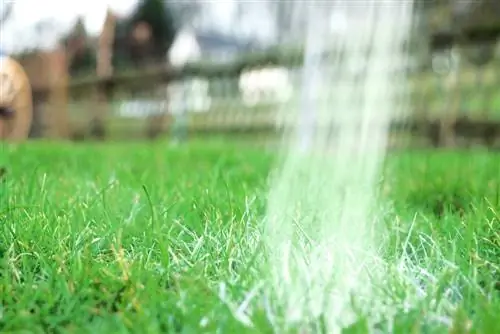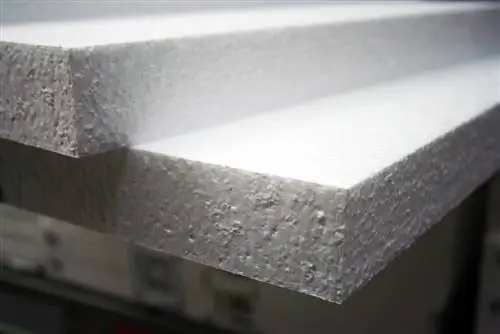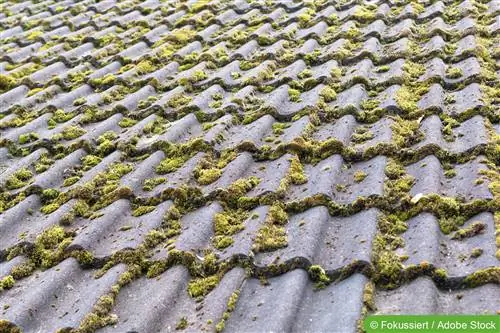- Author admin [email protected].
- Public 2023-12-17 03:39.
- Last modified 2025-06-01 06:48.
Mosses are harmless to humans, but they can certainly cause damage in the garden. The weeds spread rapidly and can therefore crowd out other plants. That's why it's advisable to contain the spread and destroy the weeds.
Removing moss with home remedies
There are different options for removing the unpopular weeds. A high-pressure cleaner or a gas burner, for example, are particularly effective. However, mosses can also be combated biologically, as numerous home remedies have also proven to be effective.
Cola
The popular soft drink is also an effective home remedy and can even be used in the garden to destroy moss. Because Cola contains phosphoric acid, which literally breaks down weeds. However, the shower not only removes existing moss, it can even prevent it from growing again. However, the use of cola is only suitable for manageable surfaces and smaller joints. The soft drink contains a lot of sugar and can therefore leave sticky residue. In addition, ants and other insects are attracted to the sugar. However, the shower is recommended for smaller and/or inaccessible areas and can be used as follows:
- Use Cola undiluted
- Distribute to affected areas
- let something take effect
- Rinse off any residue afterwards
- scraping dead moss out of joints
Vinegar
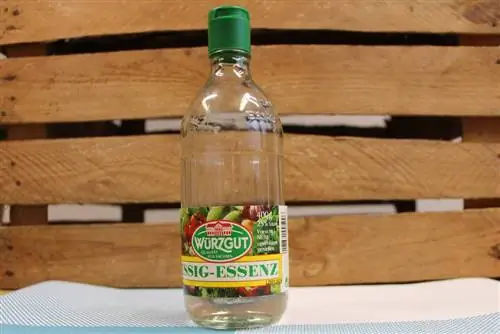
Vinegar is a true all-rounder and is still a popular home remedy in a wide variety of areas today. Fighting mosses is also possible thanks to the acid it contains. However, it should be noted that high-percentage acetic acid has a very strong effect and can disrupt the natural balance in the garden. Because it can harm both the plants and animals that live there. It is therefore advisable to only use high-percentage acetic acid on roofs or concrete and stone surfaces. If you want to fight moss on the lawn, you should use a gentle fruit or wine vinegar and use it as follows:
- either undiluted or mix with water
- spray on affected area
- leave for a few days
- scrubbing dead mosses
Tip:
To destroy weeds on the lawn with acetic acid, it is best to soak a towel in vinegar and then place it on the affected area for around 24 hours.
cooking water
If you like cooking potatoes or pasta, you can get an effective home remedy to remove moss without any additional effort. Because there is starch in the cooking water, which settles on the stomata of the plants and causes the plants to die. However, it should be noted that cooking water only destroys the upper part of the moss. However, the root system still remains, which is why the process has to be repeated several times.
- Empty cooking water on infected areas
- scrubbing dead moss
Note:
The cooking water should be uns alted if possible!
S alt
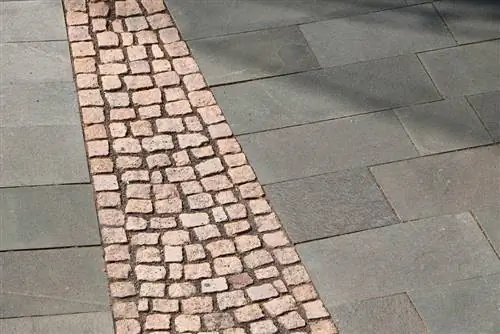
S alt is also an effective home remedy for killing weeds. Because s alt removes the moisture from the moss and thus the basis of life. However, the use of s alt is only recommended to a limited extent: it should never be used on the lawn, as s alt makes no difference between weeds and ornamental plants. Although it does not attack other plants on stone or paved paths, it can seep through the soil into the groundwater. Therefore, the use of s alt should always be treated with caution. If you still want to fight moss with it, it's best to proceed as follows:
- Use 5% saline solution
- mix with water
- water affected areas with it
- 2 - Wait for 3 sunny days
- Remove weeds afterwards with a scrub brush or scrubber
Washing soda
Washing soda is also a popular home remedy that has also proven effective in combating weeds. Because it contains sodium carbonate, which acts as a weed killer. But be careful: soda not only attacks moss, but also lawn grass! Therefore, use on the lawn is not recommended. The situation is different on sidewalks or terraces, because soda can be used there without any problems. To use soda to remove moss, do the following:
- Scrape off moss with spatula
- Mix soda with water
- 20 g soda with 10 l boiling water
- spray affected area
- Let the mixture work for a few days
- scrubbing dead mosses
- rinse with water if necessary
Lime
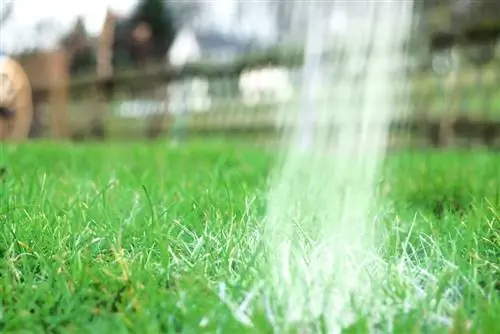
Since moss prefers to grow on acidic soils, it is worth checking the pH value of the garden soil using a soil analysis. If this is below the ideal pH value of 5 - 7, the soil should be limed moderately. This prevents the soil from becoming too acidic and thus affecting the growing conditions of the moss. The following numbers serve as guidelines for liming the soil:
- sandy soils: about 150 g / m²
- loamy soils: about 100 g / m²
Sand
Moss prefers to grow on loamy and moist soils, but avoids sandy soils. Hobby gardeners can take advantage of this and simply sprinkle garden soil with sand. The disadvantage here is that the effect takes a long time to appear. The process must be repeated at least three consecutive years. However, you can see a clear difference and less moss growth afterwards. The application is very simple and looks like this:
- Apply sand after the first mowing in spring
- Distribute construction sand to affected areas
- Grass tips should only stick out about 1 cm
- Perform 3 years in a row
Prevention
Mosses can be controlled very well, but it is still advisable to prevent their growth and spread. This is achieved primarily by making the growth conditions as unattractive as possible for weeds. Mosses prefer cool conditions and moist and shady locations with a low pH value. With this knowledge, appropriate precautionary measures can be taken to prevent or limit moss growth:
- do not water more than necessary
- Avoid backwater
- Mow the lawn to 4 - 5 cm
- Remove weeds regularly
- Loosen the soil regularly
- Avoid nutrient deficiencies
- Scarify the lawn regularly
Note:
Verticutters can be borrowed from the garden center!


